O.Thetford, P.Gray German Aircraft of the First World War (Putnam)
Zeppelin-Lindau (Dornier) C I
Another of Dornier's designs which appeared in 1917 was this C I, which was built to test his theory of stressed-skin construction, the fuselage being an all-metal structure with the sheet alloy skin bearing part of the load stresses. The wings were orthodox fabric-covered structures but with aluminium box-spars; in the first version a flush radiator was fitted in the centre-section: in the second version a car-type nose radiator was fitted.
Although the machine failed to meet the performance specifications when officially type tested on 18th March 1918, it provided Dornier with the information he required for his Rs IV fuselage.
Engine, 160 h.p. Mercedes D III. Span, 10.5 m. (34 ft. 5 1/2 in.). Length, 7.42 m. (24 ft. 4 1/8 in.). Height, 2.76 m. (9 ft. 0 3/4 in.). Area, 25.82 sq.m. (279 sq.ft.). Weights: Empty, 728 kg. (1,712 lb.). Loaded, 1,068 kg. (2,350 lb.). Speed, ca. 150 km.hr. (93.75 m.p.h.). Climb, 1,000 m. (3,280 ft.) in 4.5 min., 3,000 m. (9,840 ft.) in 18 min., 5,000 m. (16,400 ft.) in 60.4 min. Armament, one Spandau and one Parabellum machine-guns.
M.Schmeelke Zeppelin-Lindau Aircraft of WW1 (A Centennial Perspective on Great War Airplanes 42)
Zeppelin-Lindau C.I / CL.I
The General Director of LZ, Alfred Colsman, regularly visited the aviation operations headquarters in Adlershof for meetings. In October 1916 he had several of Dornier's drafts of a new C-type (two-seater combat biplane) with him. The head of the Flugmeisterei, Major Felix Wagenfuhr, was impressed and pushed to have these go into production as soon as possible. Colsman promised that upon receiving IdFlieg’s order, the company could produce 100 aircraft per month, though he likely did not confer with those who were actually responsible for the production. Later, in his autobiography, he clearly explained his optimism: “Upon receipt of a large order, I promised the delivery of 100 examples, beginning in the sixth month, and unfortunately I made a huge mistake. We first had to learn that metal construction of aircraft required much more detailed technical drawings and specifications than for airship or aircraft construction in wood, down to fractions of millimeters. Because these specific drawings for the two-seat biplane had yet to be created, the completion of the first series of these aircraft took more than a year [...]”
At Colsman's orders, the development and construction of the planes were to be completed with the collaboration of Flugzeug-Werft GmbH Staaken. In Staaken, Prof. Baumann's giant aircraft had already passed the development stage and in 1917 serial production of the Staaken R.VI began. Colsman surely hoped that this collaboration would mean a faster start of production of the C-type. Financial considerations also likely played a role, because Dorner's fundamental and basic research cost the company enormous amounts of money. Like much of his other research, of course Claude Dornier's pioneering work would not pay for itself in a short period of time.
In order to speed up development of the new C-aircraft, Colsman sent four of Dornier's engineer-developers to Prof. Baumann in Staaken. After five weeks they returned with development ideas. But these drafts were also unsuitable for metal construction. Claude Dornier wrote in the 1917 Annual Report:
“[...] Development and construction of the aircraft took pace in Seemoos. After completion, the aircraft showed several deficiencies which made a total redesign necessary. ”
Eventually Dornier was able to convince IdFlieg and Colsman of his own design of the C-Type. He began construction of this design in Seemoos with a small team of 25 employees, and continued in the new facility in Lindau-Reutin. The ZWL C.I was a modern, two-seater biplane built in all-metal monocoque construction. The wings were made of duraluminum struts with crossbars and superimposed ribs, with the usual fabric covering. The wings and the tail boom were covered with five-color camouflage fabric. The Iron Cross was painted on both the fuselage and the wings.
The Cs.I was powered by a 160 horsepower Mercedes D III / IIIa engine. The fuel tank was under the pilot's seat and in an emergency could be manually jettisoned. The aircraft was armed with a fixed IMG 08/15 which was fired through the propeller disk area. The observer used a movable MG on a swivel.
Dornier company pilot Vice Sargent Major Heinz Ruppert was set to take the aircraft number 1 for its maiden flight on November 3rd, 1917 at the former military exercise grounds in Lindau-Zech. In addition to the military-designated numbers, each LZ aircraft had its own internal numbering designation. After a few meters' run-up, the aircraft swerved 90 degrees to the right. Ruppert aborted the take-off. The reason was the undersized rudder and the unwieldy control stick. These issues were repaired by November 14th, and Ruppert tried again. Again, the aircraft threatened to veer to the right as soon as Ruppert reached take-off speed and the tail section lifted off the ground. Still, he was able to successfully launch the C.I.
After landing, the engineers closely inspected and recalibrated the landing gear, the engine brackets, and the wing bracings. The reason for the swerve was an uncontrolled airflow around the empennage. This was solved by lengthening the rear part of the fuselage through a rounded duraluminum body. During the next attempt on November 16th, the Daimler-Mercedes engine malfunctioned and a new one had to be ordered from Sindelfingen. But this replacement engine also did not perform up to expectations. Instead of 1,450 rpm, it only managed 1,280 rpm. Ruppert needed 40 minutes to reach an altitude of 4,000 meters. IdFlieg was informed about the delays, and ordered another new engine. A flight on November 22nd ended with a crash landing at the airfield in Zech. Dornier's stable metal construction proved itself even though the wings and the landing gear were heavily damaged. The aircraft was again ready to fly by November 24th and further test flights were carried out in the final days of November. On November 27th, the C.I reached an altitude of 3,600 meters in 18 minutes with an additional payload of 367 kilograms. On November 29th, at an altitude of 100 meters, a top speed of 190 kilometers per hour was measured. Similar C-aircraft such as the Halberstadt C.V, Rumpler C.IV, and LVG C. IV managed a maximum speed of just 170 km/hr.
The order for three C-type aircraft reached ZWL on December 8th, 1917. Their military designations were 15800 to 15802/17. The second and third prototype aircraft were completed at the end of 1917 and were transported to Berlin by train in early January 1918. The archives do not show which aircraft received which military number.
The acceptance flights of the C.I aircraft took place in Adlershof on January 10th through January 16th, 1918. Minimal modifications were made after these test flights. Pilot Kustner did not like the distance between the fuselage and the top wing, which limited the pilot's view. The solution: extending the wing struts by 10 centimeters. These problems were quickly taken care of and IdFlieg was informed of the completion.
This work was carried out in the hangar at Staaken, where the later serial production was planned. The location of the radiator, which was also criticized, could only be corrected on the successor model C.II. The cooling unit from the Teves St Braun company had been positioned in the center of the upper wing of the C.I. There were two problems with this: On the one hand, during maintenance work, the seat of the pilot was constantly soiled, on the other hand if the aircraft was shot at, hot radiator water would pour out onto the pilot below. With the second demonstration aircraft of the C.I type, IdFlieg also created a spec sheet with exact measurements, weights, and wing rigging instructions. In addition, stress tests were conducted. The designation "Cl" appears for the first time in IdFlieg’s type specification. Cl = lightened C-aircraft.
This aircraft was initially designed as an airplane whose primary mission was defense, meaning, as aerial escort for the working C-types of the air groups. The performance of the Cl was to be close to that of the combat aircraft. But over the course of the war the Cl types were primarily assigned to the battle squadrons, that is to say as direct support for the infantry.
According to a letter from February 6th, 1918 from the Flugmeisterei Adlershof, the type testing of the Zeppelin C.I (Dornier type) took place from February 9th to the 16th, 1918. At the concluding meeting it was decided that the Cl.I would be serial-produced in Staaken.
Unfortunately, on March 9th, 1918, Pilot Franz Kustner fell victim to a crash in a Cl.I on March 9th, 1918. The reason for the crash could not be determined. Kustner fell from a high altitude and even by examining the wreck it was impossible to draw conclusions about the reason. One theory was that there was an error in the heat treatment of the wing spar flanges, so that the mechanical strength of the part was no longer assured.
Following this accident, Claude Dornier decided that all of the modifications demanded by IdFlieg would be integrated into the Cl.Ia, which was later renamed Cl.II. It is not known what the Cl.I was used for within the air corps. Photos from the summer of 1918 show the series production of the aircraft in Staaken, and one can see 11 completed fuselages and four further fuselages in construction. One last fuselage shell belonged to the Deutsche Luftfahrtsammlung (German Aircraft Collection) in Berlin until 1945.
Military Numbers of Dornier-ZWL Aircraft
Military Designation Manufact. Type Class Engine Notes
1820-1849/18 ZWL (Do) CL.I DIIIa
 |
M.Schmeelke - Zeppelin-Lindau Aircraft of WW1 /Centennial Perspective/ (42)
|
|
|
 |
M.Schmeelke - Zeppelin-Lindau Aircraft of WW1 /Centennial Perspective/ (42)
|
| The Zeppelin C.I prototype at Adlershof before camouflage fabric was applied to the fuselage. (PM Grosz collection/STDB)
|
 |
M.Schmeelke - Zeppelin-Lindau Aircraft of WW1 /Centennial Perspective/ (42)
|
| The Zeppelin C.I prototype at Adlershof before camouflage fabric was applied to the fuselage.
|
 |
M.Schmeelke - Zeppelin-Lindau Aircraft of WW1 /Centennial Perspective/ (42)
|
| The Zeppelin C.I prototype at Adlershof before camouflage fabric was applied to the fuselage. (PM Grosz collection/STDB)
|
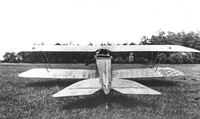 |
M.Schmeelke - Zeppelin-Lindau Aircraft of WW1 /Centennial Perspective/ (42)
|
| The Zeppelin C.I prototype at Adlershof after camouflage fabric was applied to the wings. (PM Grosz collection/STDB)
|
 |
M.Schmeelke - Zeppelin-Lindau Aircraft of WW1 /Centennial Perspective/ (42)
|
| The ZWL C.I, aircraft number 2, on the airfield in Zech before it was transported to Adlershof. The five-color camouflage from the wings was transferred to the fuselage as well. (Airbus Group)
|
 |
M.Schmeelke - Zeppelin-Lindau Aircraft of WW1 /Centennial Perspective/ (42)
|
After the take-off issues on November 3rd, 1917, a larger rudder was installed on the C.I. (Airbus Group).
Another of the losing designs for the the armour clad, ground attack requirement was this one-off Zeppelin-Lindau CL I. First flown on 3 March 1917, this 160hp Mercedes D III two seater was the brainchild of a design team headed by Claudius Dornier and used the light alloy construction he was pioneering with his series of giant flying boats. The Dornier CL I's top level speed was 102mph at sea level.
|
 |
M.Schmeelke - Zeppelin-Lindau Aircraft of WW1 /Centennial Perspective/ (42)
|
| Zeppelin-Werft-Lindau (ZWL) C.I machine 3, taken at the factory airfield at Staaken.The aircraft had army, five-color lozenge fabric covering on the wings and elevators.
|
 |
M.Schmeelke - Zeppelin-Lindau Aircraft of WW1 /Centennial Perspective/ (42)
|
| The ZLW C.I, number 3, on the company's own airfield in Staaken.
|
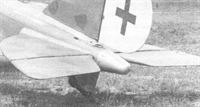 |
M.Schmeelke - Zeppelin-Lindau Aircraft of WW1 /Centennial Perspective/ (42)
|
| The airflow, which initially caused problems at take-off, was improved by adding a small round duraluminum body onto the rear end of the fuselage. (R. Zankl)
|
 |
M.Schmeelke - Zeppelin-Lindau Aircraft of WW1 /Centennial Perspective/ (42)
|
| The top wing of the C.I sat on four trumpet-shaped struts, which were riveted on to the fuselage. (Airbus Group)
|
 |
M.Schmeelke - Zeppelin-Lindau Aircraft of WW1 /Centennial Perspective/ (42)
|
| Dornier's monocoque construction of the C.I fuselage. (Airbus Group)
|
 |
M.Schmeelke - Zeppelin-Lindau Aircraft of WW1 /Centennial Perspective/ (42)
|
| The Deutsche Luftfahrtmuseum (German aircraft museum) in Berlin owned a shell of a Cl.I fuselage until 1945. (Airbus Group)
|
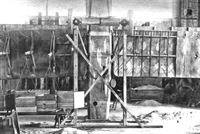 |
M.Schmeelke - Zeppelin-Lindau Aircraft of WW1 /Centennial Perspective/ (42)
|
| Stress test of C.I, number 1, in Seemoos in January 1918. (Airbus Group)
|
 |
M.Schmeelke - Zeppelin-Lindau Aircraft of WW1 /Centennial Perspective/ (42)
|
| Front section of the fuselage after the stress test. The improved control stick was also installed on this aircraft. (Airbus Group)
|
 |
M.Schmeelke - Zeppelin-Lindau Aircraft of WW1 /Centennial Perspective/ (42)
|
| Fuselage construction of the Cl.I in Staaken with the help of jigs. (Airbus Group)
|
 |
M.Schmeelke - Zeppelin-Lindau Aircraft of WW1 /Centennial Perspective/ (42)
|
| Series production of the Cl.I in Staaken in the summer of 1918 (Airbus Group)
|
 |
M.Schmeelke - Zeppelin-Lindau Aircraft of WW1 /Centennial Perspective/ (42)
|
| Engine and MG assembly in the completed fuselages of the Cl.I. (Airbus Group)
|
 |
M.Schmeelke - Zeppelin-Lindau Aircraft of WW1 /Centennial Perspective/ (42)
|
| Wing assembly in the central hall at Staaken.
|
 |
M.Schmeelke - Zeppelin-Lindau Aircraft of WW1 /Centennial Perspective/ (42)
|
| Crash landing of the C.I, number 1, on November 22nd, 1917 in Zech. Despite significant damage, the airplane could be repaired quickly and later served as a test aircraft for various propellers and engine exhaust designs.
|
 |
M.Schmeelke - Zeppelin-Lindau Aircraft of WW1 /Centennial Perspective/ (42)
|
| Crash landing of the C.I, number 1, on November 22nd, 1917 in Zech. Despite significant damage, the airplane could be repaired quickly and later served as a test aircraft for various propellers and engine exhaust designs.
|
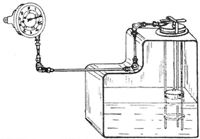 |
M.Schmeelke - Zeppelin-Lindau Aircraft of WW1 /Centennial Perspective/ (42)
|
| The fuel tank, which could hold 130 liters, under the seat of the pilot. He could dispose of it in the event of an emergency.
|
 |
M.Schmeelke - Zeppelin-Lindau Aircraft of WW1 /Centennial Perspective/ (42)
|
| Zeppelin CL.I Drawing
|
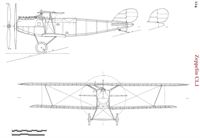 |
M.Schmeelke - Zeppelin-Lindau Aircraft of WW1 /Centennial Perspective/ (42)
|
| Zeppelin CL.I
|
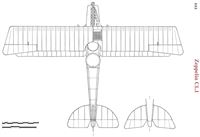 |
M.Schmeelke - Zeppelin-Lindau Aircraft of WW1 /Centennial Perspective/ (42)
|
| Zeppelin CL.I
|
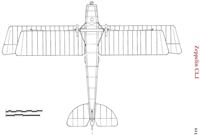 |
M.Schmeelke - Zeppelin-Lindau Aircraft of WW1 /Centennial Perspective/ (42)
|
| Zeppelin CL.I
|



























